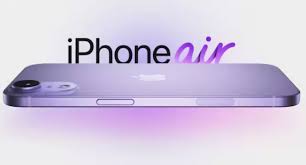A new leak suggests Apple is already rethinking a major hardware change slated for the iPhone 17, potentially canceling the dedicated Camera Control button for its 2025 flagship.
In the fast-paced world of smartphone technology, even the most anticipated features can be scrapped before they see the light of day. According to a recent rumor originating from noted Apple analyst Ming-Chi Kuo, the iPhone 17 might do just that, potentially axing the new Camera Control button that is widely expected to debut on this year’s iPhone 16 series.
This development presents a curious case of Apple seemingly reversing course on a significant design decision before the first device featuring it has even hit store shelves.

What Was the Camera Control Button Supposed to Be?
First, let’s rewind. The Camera Control button has been a cornerstone of iPhone 16 leaks for months. Touted as a transformative hardware addition, it was described as a new, mechanical button located on the lower right side of the phone (opposite the power button on the left).
Unlike a simple shutter button, rumors suggested it would be a multi-functional “force sensor” button. Users would be able to:
- Press lightly: Focus on a subject.
- Press harder: Capture a photo.
- Swipe left/right: Seamlessly zoom in and out.
- Swipe up/down (potentially): Switch between photo, video, and portrait modes.
The goal was clear: to provide a more tactile, DSLR-like experience for controlling the camera, reducing reliance on the touchscreen and making it easier to frame shots, especially when holding the phone horizontally.
Why the Sudden Change of Heart for iPhone 17?
According to the analyst’s report, the reason for the potential cancellation boils down to two key factors: technical challenges and a subpar user experience.
The rumor indicates that Apple may be encountering significant hurdles in integrating the new hardware. The button’s design was reportedly complex, requiring a sophisticated system of force sensors and haptic feedback (via the Taptic Engine) to simulate a button press without much physical movement. This complexity could be leading to manufacturing difficulties, potentially affecting production yields and timelines.
More critically, internal testing might have revealed that the user experience did not meet Apple’s notoriously high standards. If the button felt unresponsive, confusing, or simply not intuitive enough to use, it would clash with Apple’s core philosophy of simplicity and elegance. Introducing a new hardware feature that feels like a gimmick is a risk the company is often unwilling to take.
What Could This Mean for the iPhone’s Camera Future?
If the rumor holds true, it signals that Apple’s approach to professional camera controls is still in flux. Canceling the button before the iPhone 17 suggests that the company is prioritizing a flawless user experience over simply adding new hardware for the sake of innovation.
This doesn’t mean Apple is abandoning the goal of enhanced camera control. Instead, the focus may shift entirely to software and AI-driven solutions. We could see more advanced gesture controls, a redesigned camera app interface, or smarter automatic settings that make manual adjustments less necessary.
It also reinforces that in the rumor cycle, no feature is ever guaranteed. Even features reported by reliable sources can be altered or canceled late in the development process based on real-world testing and manufacturing feasibility.
Is the iPhone 17 coming out?
Yes, the iPhone 17 is expected to be released. Apple follows a highly predictable annual product cycle, typically announcing its new flagship iPhone lineup every September. The iPhone 17 models are the natural successors to the iPhone 16 series, which is anticipated to launch in the fall of 2024. Therefore, based on this established pattern, we can confidently expect the iPhone 17 to be unveiled and released in September of 2025. While Apple has not made any official announcements regarding the device, its eventual release is a near certainty according to the company’s longstanding tradition.
Is there an iPhone 17 mini?
As of now, it is highly unlikely that there will be an iPhone 17 mini. Apple discontinued the mini form factor with the iPhone 13 mini after it failed to meet sales expectations. The company’s current strategy for its standard lineup has shifted to offering two sizes of its base model (e.g., iPhone 16 and iPhone 16 Plus) and two sizes of its Pro model (e.g., iPhone 16 Pro and iPhone 16 Pro Max). This approach caters to the clear market preference for larger screen sizes. There have been no credible rumors from reliable sources suggesting a return of the mini design for the iPhone 17 generation, indicating that Apple is continuing to focus on its more popular-sized devices.
Is the iPhone 17 going to change?
Yes, the iPhone 17 is expected to undergo significant changes, although many will be evolutionary rather than revolutionary. Based on early rumors and Apple’s typical development cycle, potential changes could include a new design language with different materials or finishes, a more powerful and efficient chipset (likely called the A19 chip), and incremental improvements to the camera system, possibly with enhanced sensors or new computational photography features. One of the most prominent rumors, as reported by analysts like Ming-Chi Kuo, suggests a major change to the front display, potentially introducing a truly all-screen design by moving the Face ID sensors under the surface. This would eliminate the Dynamic Island or notch, representing the most dramatic visual change in years. However, it is crucial to remember that these are early speculations, and the final feature set will be confirmed by Apple upon the phone’s official announcement in 2025.
Competitors like Samsung and Google are likely to respond to the iPhone 17’s advancements by further leveraging their historical strengths in hardware flexibility and AI integration, respectively. Samsung, with its Galaxy S and Z series, may intensify its marketing around hardware features where it already holds a perceived lead, such as high-megapixel camera sensors, foldable form factors, and highly customizable software experiences. They will likely frame Apple’s under-display Face ID as a catching-up feature, pointing to their own under-display camera technology in foldable phones. Their strategy will be to present their devices as offering a glimpse into the future of smartphone design today, rather than waiting for Apple’s annual iteration.
In the software arena, Google’s Pixel lineup will almost certainly double down on its core identity: leveraging its industry-leading artificial intelligence and machine learning capabilities. While Apple focuses on hardware integration and a new design, Google will aim to make its camera system seem smarter and more context-aware through software alone. Expect Google to highlight breakthrough AI-powered editing tools, real-time translation features, and predictive assistance that feels more seamless and proactive. Their counter-strategy will be to argue that the most important evolution of a phone isn’t its physical buttons or housing, but the intelligent, software-driven experiences that make the device more helpful and powerful for the user.
The Bottom Line
For consumers, this rumor is a fascinating glimpse into the iterative and often unpredictable process of product design at Apple. While the iPhone 16 is still expected to launch with the Camera Control button this September, its future is now in question. All eyes will be on the iPhone 16’s launch to see how the button is received. If it proves unpopular or finicky, its rumored demise on the iPhone 17 will make perfect sense.
The lesson, as always, is to treat all pre-release rumors with cautious optimism. The only features that are truly confirmed are the ones announced by Apple on stage.
- Apple to Reintroduce Beloved 12.9-inch MacBook at a Surprising $599 Starting Price

- iPhone 17 May Abandon the Controversial Camera Control Button

- Qualcomm Prepares Next-Gen Premium Mobile Chip

- The AI Power Demand Boom’s Hidden Crisis: Soaring Strains Global Energy Grids

- Elon Musk’s Political Ambitions: How a New “America Party” Could Impact Tesla and His Empire

